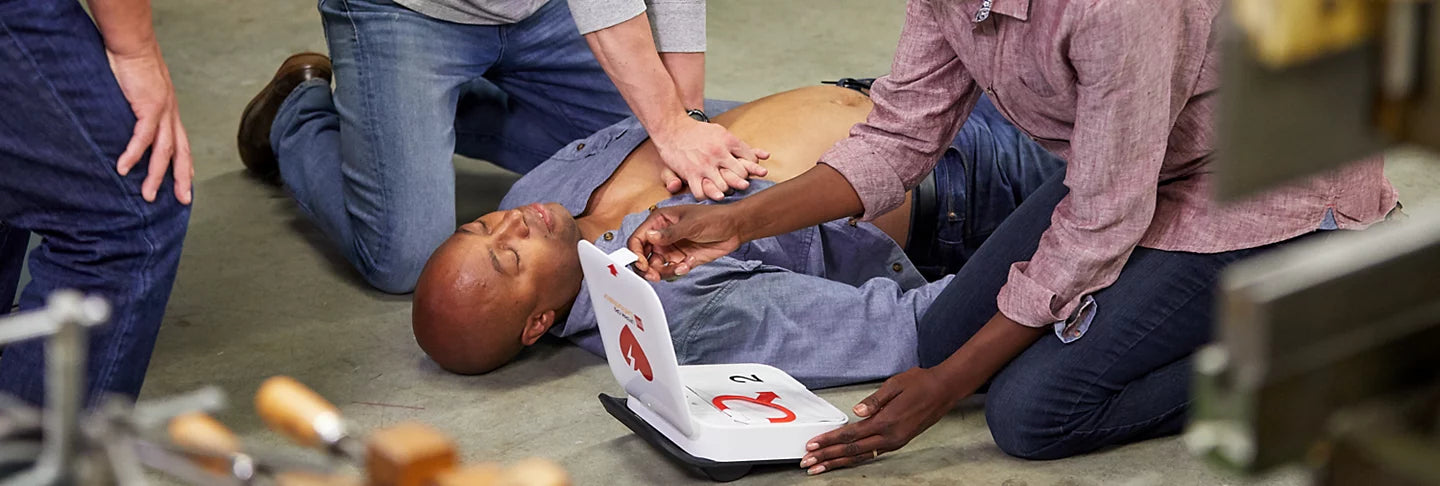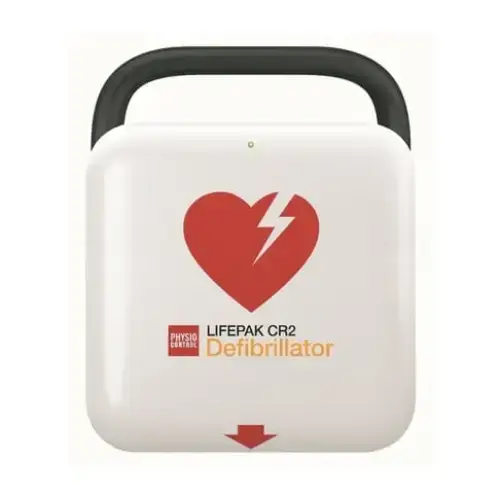It is A Matter of Life and Death
Every year, thousands of Canadians experience cardiac arrest outside of hospital settings. In these critical moments, having an Automated External Defibrillator (AED) nearby can mean the difference between life and death. But why exactly do we need these devices throughout our communities, and what makes them so essential to public health in Canada?

Understanding Cardiac Arrest in Canada
Cardiac arrest occurs when the heart suddenly stops beating effectively, cutting off blood flow to vital organs. The statistics in Canada are sobering:
- Approximately 50,000 Canadians experience sudden cardiac arrest annually
- On average, one Canadian dies from cardiac arrest every 13 minutes
- Without immediate intervention, survival rates drop by 7-10% for each minute that passes
- Only about 10% of people who suffer cardiac arrest outside of hospitals survive
These numbers highlight why finding an "AED near me" shouldn't be a challenge for any Canadian.
AED vs. CPR: Why Both Matter, But AEDs Are Game-Changers
While CPR (Cardiopulmonary Resuscitation) is an essential first response technique, it has significant limitations when used alone:
CPR maintains blood circulation but cannot restart a heart that has stopped or correct abnormal rhythms. It's designed to buy time until definitive treatment arrives. An AED, however, delivers an electrical shock that can reset the heart's electrical system and restore normal rhythm—the only effective treatment for many types of cardiac arrest.
Research shows that:
- CPR alone provides a 5-10% chance of survival
- CPR combined with AED use within 3-5 minutes increases survival rates to over 70%
- For every minute without defibrillation, survival chances decrease by 7-10%
This complementary relationship makes both skills vital, but emphasizes why AED access is crucial throughout Canadian communities.
AED Requirements in Canada
While specific AED requirements vary by province, there's a growing recognition of their importance:
- Ontario's Chase McEachern Act encourages public access to AEDs
- Manitoba has mandated AEDs in high-traffic public places
- British Columbia has installed AEDs in all public recreational facilities
- Many jurisdictions now require AEDs in schools, gyms, and large public venues
These requirements stem from overwhelming evidence that accessible AEDs save lives, leading to increased implementation across the country.
The Accessibility Challenge
Despite their life-saving potential, AED accessibility remains a significant challenge:
- Urban centers typically have better AED coverage than rural areas
- Many Canadians don't know how to locate the nearest AED in an emergency
- AED registration systems like through local municipalities help track and locate devices, but many AEDs remain unregistered
- Public awareness about how to use an AED remains surprisingly low
The good news is that portable AED technology has advanced significantly, making units more compact, user-friendly, and affordable than ever before.
How to Use an AED: Simpler Than You Think
One common misconception is that AEDs require extensive medical knowledge to operate. In reality:
- Modern AEDs are designed for lay rescuers with no medical training
- Voice prompts guide users through each step of the process
- The device automatically analyzes the victim's heart rhythm
- AEDs will not deliver a shock unless it's needed
While formal AED certification is beneficial, today's devices are specifically designed to be used by anyone during an emergency.

https://aed.ca/products/zoll-aed-3
The Investment Consideration: AED Price and Cost
The cost of AEDs in Canada typically ranges from $1,595 to $2,500, depending on features and model. While this represents a significant investment, consider:
- The average cost of hospitalization for cardiac arrest exceeds $50,000
- Lost productivity and long-term care costs can reach hundreds of thousands
- The economic impact of premature death is immeasurable
- Some organizations offer grants or assistance programs for AED purchases
- Some insurance providers offer discounts to businesses that install AEDs
When viewed against the potential to save lives, the AED cost becomes a reasonable investment for businesses, communities, and even households.

https://aed.ca/products/stryker-physio-cr2-semi-auto-english-wifi
The Path Forward: Creating an AED-Ready Canada
To address the critical need for AEDs throughout Canada, several initiatives are gaining momentum:
- Community mapping programs: Apps and websites helping Canadians locate the nearest AED
- Public education campaigns: Increasing awareness about how to use an AED and recognize cardiac emergencies
- AED certification programs: Making training more accessible through online and community-based courses
- Rural access initiatives: Special programs targeting underserved communities
- Public-private partnerships: Businesses and government collaborating to increase AED placement
Conclusion
The need for widespread AED access throughout Canada is clear and urgent. These devices represent our best chance to improve survival rates for the tens of thousands of Canadians who experience cardiac arrest each year.
Whether you're a business owner considering installing an AED, a community leader advocating for better public access, or an individual wanting to be prepared, understanding the critical role these devices play is the first step. The next step—taking action to ensure an AED is available when and where it's needed—could literally save someone's life.
For more information about how to use an AED, or to purchase an AED contact AED.ca. Canada's AED Company.






